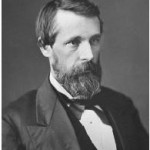Billionaire Growth Strategies
With Zara founder Amancio Ortega now ranked as the world’s third richest man after Carlos Slim Helu and Bill Gates, it’s a good time to take a look at the disruptive growth strategy he used to build the company into a global retail juggernaut. If you are not familiar with the brand think of Zara as the European version of The Gap where you can find affordably-priced copies of the more expensive brand’s collections. Zara is known for “fast fashion” wherein the focus is on making a profit with many short run collections that often sell out within a month rather than the traditional model wherein a company introduces just one or two collections per year.
Zara’s parent company, Inditex, now has close to 6000 stores in 85 countries around the globe. About a third of these outlets are in Spain. The 20-year old company is based in northern Spain. It had $15.3 billion in sales and $2.16 billion in net profits for just the first nine months of 2012.
Now let’s move onto the business models of both Zara and the competition to see what works and why.
“After Gates and Slim comes Amancio Ortega, who built the world’s largest fashion empire, Zara. He’s difficult to know, impossible to interview, and incredibly secretive. An exclusive portrait.”
Fortune just published a look at the world’s third richest man, Amancio Ortega, who runs the fashion empire Zara. He achieved his spot near the top of the list by trailblazing an entirely new growth strategy for the company. I’ll cover it in detail in a few days.
For now, read the article.
Growth Strategies: Product Acquisitions
In the theater business there are people who specialize in finding off-Broadway productions with potential. They then tweak them for the big time by reworking the script, recruiting better actors, improving overall production values, providing better promotions, and then relaunching them on Broadway where they will rake in the money.
Back in 2002, Inc. magazine had a brief yet memorable article about a man with a very interesting system for doing basically the same with natural food brands. He finds small regional brands with potential for broader success, acquires them, makes a few production and branding improvements, and then turns them into national brands by running them through his distribution system.
Growth Strategies: Marketing or Acquisitions?
Under some circumstances it makes far more sense to build a company through the acquisition of competitors than it does by attempting to grow organically with more marketing. Take, for example, most businesses which have a subscriber revenue model. Think of ISPs, cable system operators, cell-phone service providers. If an ISP, for example, wishes to start growing at a more aggressive rate it has two basic choices. It can ramp up its marketing efforts and budgets or it can explore a growth through acquisitions strategy.
History Channel’s The Men Who Built America
With more episodes being planned, I am keeping my fingers crossed that the series will cover the building of the first transnational railroad. This particular story is full of outrageous behavior by characters rightfully called Robber Barons.
One of the most entertaining stories is about the financing of the western half of the railroad. This consortium began from the central California laying track eastwards while the other started simultaneously in the Midwest building eastwards. The plan was for the two to meet in the middle and connect their tracks. Both groups relied heavily on government support to make the enormous projects viable. This support came in the form of both land grants for right-of-ways and money. In some cases the right-of-ways were 20 to 30 miles in width. The cash component was paid out every time the line achieved a mileage milestone and not before. This created some cash flow problems for the consortiums. The western group headed by Leland Stanford and Collis Huntington received incentives from the federal government consisting of $24 million in financing and over nine million acres of land for railway rights of way.

Recent Comments